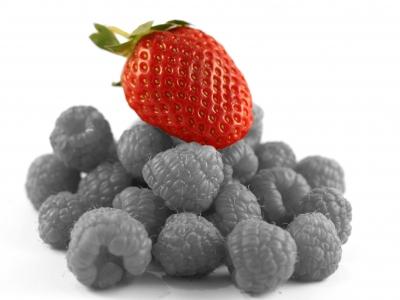
Snail porridge and sardine on toast ice cream may have changed the way we think about what tastes good. Heston Blumenthal is a chef with an inquisitive mind who plays with phials, gases, and centrifugal forces. A new approach to cooking, where science is regarded as a tool like the oven. But can scientific knowledge makes your food experience any better?
Snail porridge and sardine on toast ice cream may have changed the way we think about what tastes good. Heston Blumenthal is a chef with an inquisitive mind who plays with phials, gases, and centrifugal forces. A new approach to cooking, where science is regarded as a tool like the oven. But can scientific knowledge makes your food experience any better?
Eating and cooking is a multi-sensory pleasure, at least it should be, and we are not using our sense of taste fully. Heston Blumenthal tries to open up our mind about food and find ways to make us more adventurous.
Food is associated with personal memories and Heston tries to capture memories in some of his dishes like The Mad Hatter’s Tea Party. He deconstructs every single element of taste and texture and explores how they come together when we eat something like black forest gateau or pizza. He experiments with tastes, touch, and the sound of eating. A soda-siphon-type gadget pumps out a mousse of green tea and lime into a bowl of liquid nitrogen, which is chilled to -190C and then served straight on to the tongue. The mousse vanishes almost instantly. A puff of steam and then the freezing mist is gone.
Measuring the crunch of fish-batter may be one thing but providing you with a microphone inserted into a shell to accompany a dish with seafood adds another dimension to eating the food. The dish “The Sound of Sea” helps you to remember that glorious day on the beach while you smell and taste the food.
So where does Heston get his inspiration from and how does he come up with ideas? Heston says that he starts with intuition and then tries to find a reason, scientific explanation, to why it would work. Memory plays a vital role when he combines flavours. He has developed a memory for tastes and a whiff of banana smell when opening the lid to a stew with parsley may tempt him into adding banana with parsley to another dish.
What affects people’s experiences of eating? The idea of a supersized ice cream, or a huge dunking biscuits may be something we all dreamed about as kids. Heston tries to realise these dreams. A ton of ice cream! How do you put that into a thin cone? How do you freeze it? And how do you make sure that it tastes delicious?

Heston Blumenthal’s food is delicious and nothing is served unless it does taste good. He is a chef first of all. Yet, he has inspired an interest and fascination in chemistry. Apples, chocolate, and bread are after all made of”chemicals”. He works with scientists and has built a lab at the restaurant. Inspiration also comes from psychology and ideas and information are regarded as a learning process. Joining chemistry, psychology and cooking together has helped Heston to get around people’s preconceptions about what should taste nice.
Would you try a dish with mango, green peppercorn, and pine? Does the pine remind you of cleaning products, or a forest filled with Christmas trees? Well, it seems like if you get a hit of pine flavour before the dish is served, like a pine-sherbet, you do not think that you have a mouthful of cleaner. The taste is not unexpected, the sherbet has prepared you.
There are many lessons to be learned from a chief like Heston Blumenthal. Thinking like eating does not take place in a vacuum. Memories and experiences influence the result. Directing and planning a succession of flavours that explodes in a dish, using smell to evoke emotions and memories, and headphone to emerge you into sound. Crab ice cream tastes differently depending on what you call it. Ideas are given value depending on how puts them forward. Our perception of flavours is subjective and nostalgia triggers a longing for certain dishes. Familiar ideas and suggestions are comfortable, even though they may not be the best option.
“Of course I want to create food that is delicious, but this depends on so much more than simply what’s going on in the mouth-context, history, nostalgia, emotion, memory and the interplay of sight, smell, sound and taste all play an important part in our appreciation and enjoyment of food.” Heston Blumenthal
Ways of using different experiences when searching for ideas, looking for solutions to problems will be explored in our coming eBook. Thinkibility – Positive & Negative.
Photo: “Strawberry And Raspberries” by Inferno Pix
